From The KEK Inter-University Research Institute Corporation [「真理の追究」 を目指して] (JP)
6.19.24
A Swift Formalism to See the Dawn of the Universe.
________________________________________
Executive Summary
Question
A detection of primordial gravitational waves, ripples of spacetime generated in the early universe, is believed to lead to the elucidation of the physical laws of the extremely high-energy universe shortly after the beginning of the universe. However, theoretical calculations of primordial gravitational waves are often very complicated, posing a barrier to understanding models of the early universe.
Findings
By applying the separate universe approach, which interprets the universe like mosaic art, we have significantly simplified the calculation of primordial gravitational waves. This allows the prediction of gravitational waves through a back-of-envelop calculation, even for models that previously required complex numerical computations.
Meaning
This development enables the calculation of theoretical predictions for a variety of models, including those that were previously difficult to analyze, and is expected to contribute to the understanding of the early universe through gravitational wave observations. Additionally, this method has been shown to be useful for intuitively understanding the dynamics of primordial gravitational waves.
________________________________________
Overview
It has been widely believed that there was an epoch of rapid accelerated expansion caused by extremely high vacuum energy, which is called “cosmic inflation”.
_________________________________________
Inflation
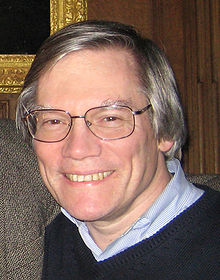
Alan Guth, from M.I.T., who first proposed cosmic inflation

Alan Guth’s original notes on inflation

The inflationary epoch is believed to have lasted from 10^−36 seconds to between 10^−33 and 10^−32 seconds after the Big Bang. Following the inflationary period, the universe continued to expand, but at a slower rate. The re-acceleration of this slowing expansion due to dark energy began after the universe was already over 7.7 billion years old (5.4 billion years ago)
_________________________________________
The inflation scenario has been tested by measuring the density fluctuations in the early universe, called the primordial density perturbation, via various cosmological observations. However, the driving force of this rapid acceleration and the evolution of other matters in this accelerating universe still remain unknown. Numerous theories (or models of inflation) have been proposed to explain the accelerating universe. It is possible to verify which model is correct by comparing the theoretical prediction of each inflation model with the latest observations.
During the inflationary period, primordial gravitational waves, which are ripples of spacetime, were generated through quantum effects similar to the primordial density fluctuation. It is believed that primordial gravitational waves contain crucial information about the models of inflation such as the magnitude of the vacuum energy that caused inflation. However, theoretical calculations which estimate primordial gravitational waves for each model are generally very complicated, posing a barrier to identifying the correct inflation model. Particularly, small effects known as nonlinear effects are important for distinguishing between different models, but calculating the nonlinear effects of primordial gravitational waves often requires computer-based calculations, limiting theoretical research on primordial gravitational waves to a few simplistic models.
In contrast to gravitational waves, the theoretical research on primordial density fluctuation is more advanced. A simple calculation method known as the “separate universe approach”, which interprets the inhomogeneous spatial distribution of the universe like a mosaic art, was established in the 1990s and has been widely used ever since. This method significantly simplifies calculations by describing the evolution of the universe, which depends on time and space, using evolution equations that depend only on time. However, there was no calculation method using the separate universe approach for gravitational waves.
In this study, we have opened the door that had been closed for over a quarter of a century since the establishment of this simple calculation method for the density fluctuation and, for the first time, established a calculation method for primordial gravitational waves using the separate universe approach. This makes it possible to study a wide range of inflation models without relying on complex numerical calculations. Since the separate universe approach also helps in intuitively understanding the evolution of the universe, it is expected to deepen our understanding of the time evolution of primordial gravitational waves.
Primordial gravitational waves can be detected by examining the polarization of light coming from all directions in the universe, known as “cosmic microwave background radiation”.
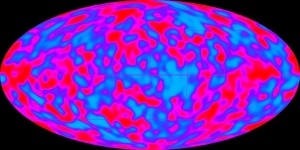
Due to their significance, many observation plans have been proposed. By using the newly developed separate universe approach, it would be now possible to calculate primordial gravitational waves predicted by a variety of cosmological models, including those that were previously difficult to analyze. This is expected to reveal the overall picture of the universe shortly after the beginning through the detection of gravitational waves and ultimately lead to the elucidation of the physical laws of the extreme-high-energy world, which cannot be tested by accelerator experiments.
Figure: This figure provides a naive image of the separate universe approach. Since the actual universe varies from place to place, we need to solve an evolution equation which depends both time and space position. By using the separate universe approach, the evolution of the coarse-grained universe can be computed simply by solving a time-dependent equation for each monochromatic pixel individually.
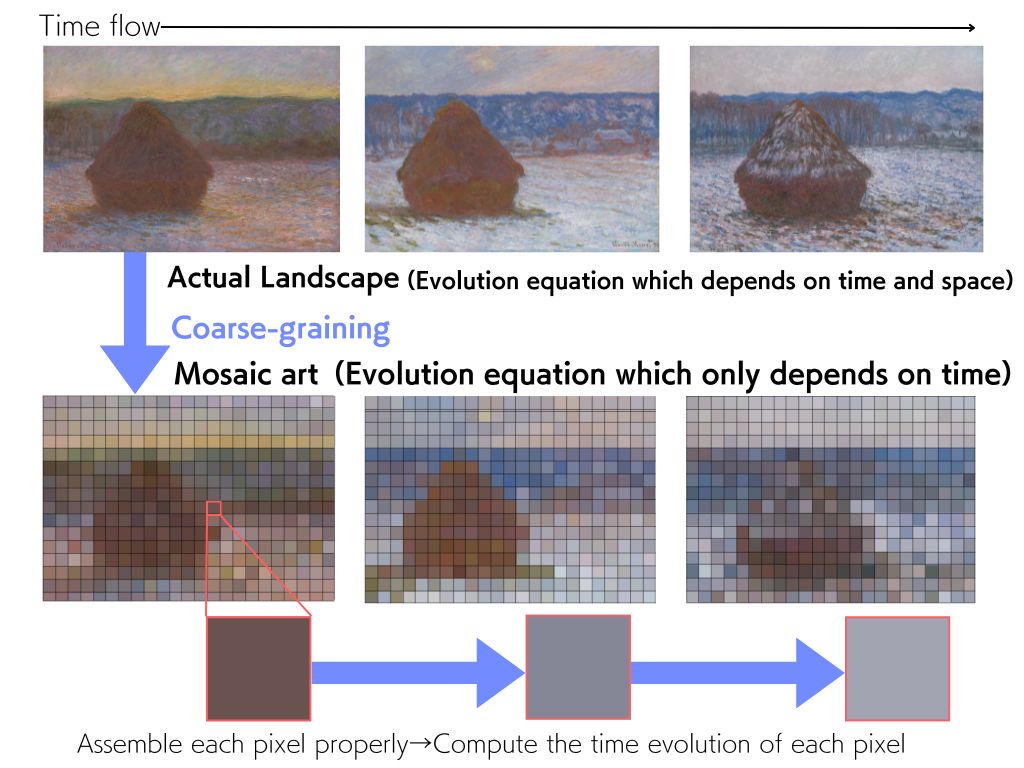
This project was conducted by Takahiro Tanaka, a professor from the Graduate School of Science, Kyoto University and Yuko Urakawa, an associate professor from the High Energy Accelerator Research Organization (KEK) and the Kobayashi-Maskawa Institute for the Origin of Particles and the Universe, Nagoya University.
Science paper:
Physical Review Letters
See the full article here .
Comments are invited and will be appreciated, especially if the reader finds any errors which I can correct.
five-ways-keep-your-child-safe-school-shootings
Please help promote STEM in your local schools.
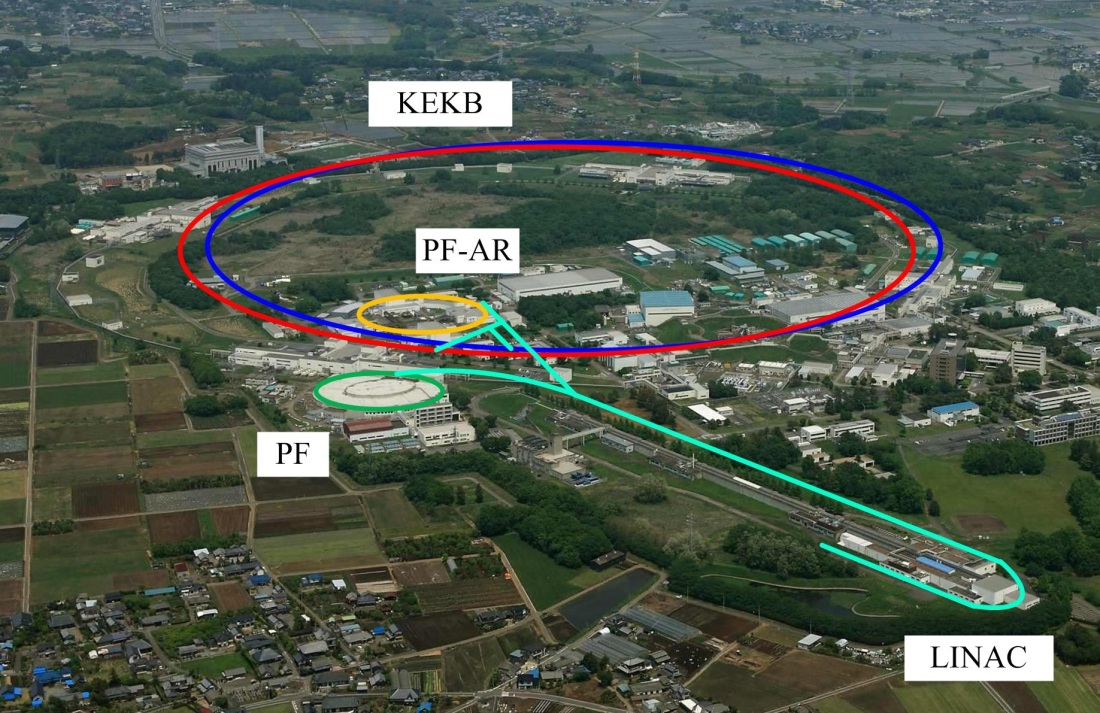
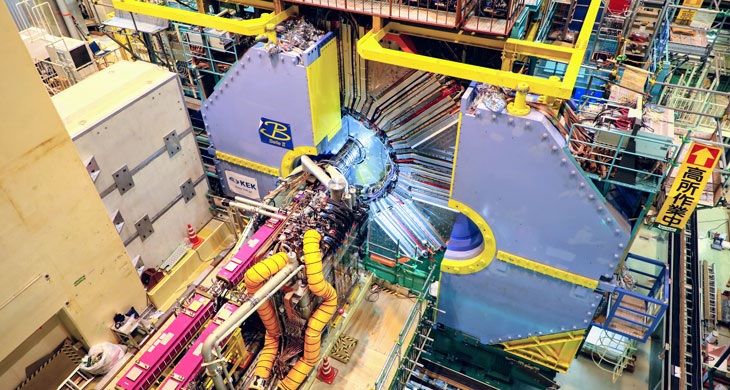
KEK, the High Energy Accelerator Research Organization (JP), is one of the world’s leading accelerator science research laboratories, using high-energy particle beams and synchrotron light sources to probe the fundamental properties of matter. With state-of-the-art infrastructure, KEK is advancing our understanding of the universe that surrounds us, its mechanisms and their control. Our mission is:
• To make discoveries that address the most compelling questions in a wide range of fields, including particle physics, nuclear physics, materials science, and life science. We at KEK strive to make the most effective use of the funds entrusted by Japanese citizens for the benefit of all, by adding to knowledge and improving the technology that protects the environment and serves the economy, academia, and public health; and
• To act as an Inter-University Research Institute Corporation, a center of excellence that promotes academic research by fulfilling the needs of researchers in universities across the country and by cooperating extensively with researchers abroad; and
• To promote national and international collaborative research activities by providing advanced research facilities and opportunities. KEK is committed to be in the forefront of accelerator science in Asia-Oceania, and to cooperate closely with other institutions, especially with Asian laboratories.
Established in 1997 in a reorganization of the Institute of Nuclear Study, University of Tokyo (established in 1955), the National Laboratory for High Energy Physics (established in 1971), and the Meson Science Laboratory of the University of Tokyo (established in 1988), KEK serves as a center of excellence for domestic and foreign researchers, providing a wide variety of research opportunities. In addition to the activities at the Tsukuba Campus, KEK is now jointly operating a high-intensity proton accelerator facility (J-PARC|Japan Proton Accelerator Research Complex (JP)) in Tokai village, together with the Japan Atomic Energy Agency (JAEA). Over 600 scientists, engineers, students and staff perform research activities on the Tsukuba and Tokai campuses. KEK attracts nearly 100,000 national and international researchers every year (total man-days), and provides excellent research facilities and opportunities to many students and post-doctoral fellows each year.

